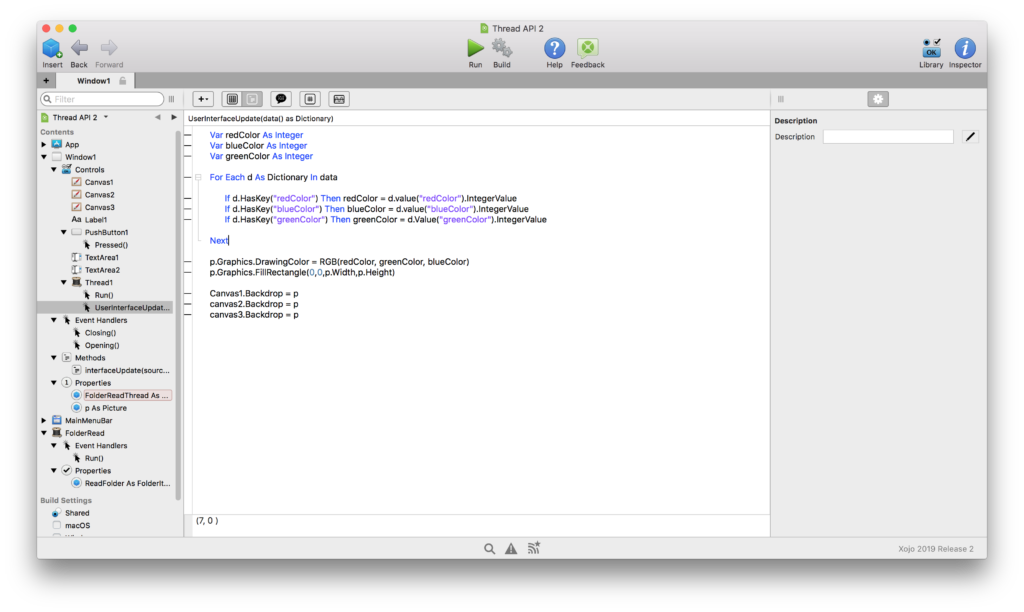

- XOJO DATABASE EXAMPLE LICENSE KEY
- XOJO DATABASE EXAMPLE CODE
- XOJO DATABASE EXAMPLE LICENSE
- XOJO DATABASE EXAMPLE DOWNLOAD
- XOJO DATABASE EXAMPLE MAC
If you are creating a development tool, you will include the 'Made with Xojo' logo.You won't create a derivative of the Xojo IDE, frameworks or compiler.
XOJO DATABASE EXAMPLE LICENSE
XOJO DATABASE EXAMPLE LICENSE KEY
XOJO DATABASE EXAMPLE DOWNLOAD
Filed under Avg Free Edition Download Xojo was reviewed by Alexandra PetracheĤ.0 / 5 LIMITATIONS IN THE UNREGISTERED VERSION However, Xojo has a friendly user interface and a unique implementation of the object-oriented model. Depending on your development needs and coding experience, this set of tools might be suitable or not. Given the documentation and extensive set of resources, it should be easy for new users to get started with Xojo.
XOJO DATABASE EXAMPLE CODE
After accessing a certain action event, you would need to add functionality to that object by inserting the Xojo code in the available code editor. However, for adding additional functionality to an element, you could click it, and choose from a list of possible (action) events. After doing that, you would change the button's caption, for reflecting a certain message to an imaginary end-user.įinally, you can run your project to display the newly-added button. You can continue by modifying the button's name to, for example, 'Hello World' (like a naming given to a variable seen by the developer only). You may start by adding an Event Handler (that will make your app reactive to user input) and continue with a minimal coding example you can drag an element from the Library window to the pasteboard (e.g. Other important areas are the 'Code View,' where you add your source code, and the 'Layout View' (where you design the GUI of your app). On the right side of your screen, there is the Library here, you can navigate a list of objects called controllers. The left panel, called the Navigator, is the place where your project files are going to be displayed, in a tree-like structure. After choosing your option, you will be shown a three-container window.Īt the center, there will be the pasteboard where you will design the interface of your app. When opening the Xojo for the first time, you need to select the type of project you are trying to create (e.g. The tool's documentation presents the programming patterns and the object-orientated model you can approach when creating new programs. How does this actually work and what is the presented workflow? Also, upon downloading Xojo, you will actually be prompted with an entire setup that involves a code editor, an IDE, a debugger, an app front-end creator and editor, and a builder. How does this actually work? First of all, Xojo is a programming language (you can download and review its documentation here). However, all the functions offered by Xojo seem to be a bit too good to be true. Xojo is suitable for creating apps that run on Windows, macOS, Linux, iOS, and Raspberry Pi. The documentation presents this lightweight programming language as a suite of utilities meant to be built on top of Visual Basic (a programming language under Microsoft's proprietary right) and Java. It is an integrated development tool and a programing language in itself. We could start by saying a few things about Xojo. An unconventional approach that is suitable for those who need to develop multi-platform apps Xojo enables access to an entire suite of tools for creating, running, debugging, and building applications from within the same development environment.
XOJO DATABASE EXAMPLE MAC


 0 kommentar(er)
0 kommentar(er)
